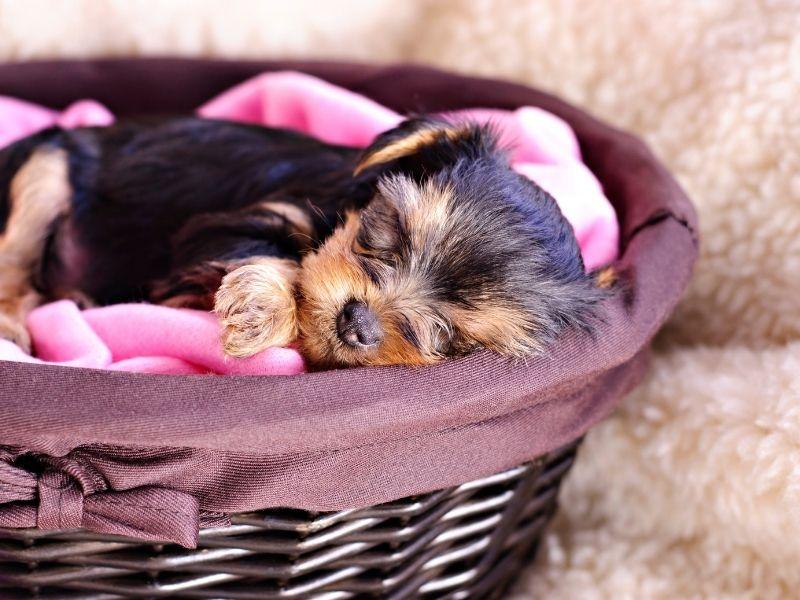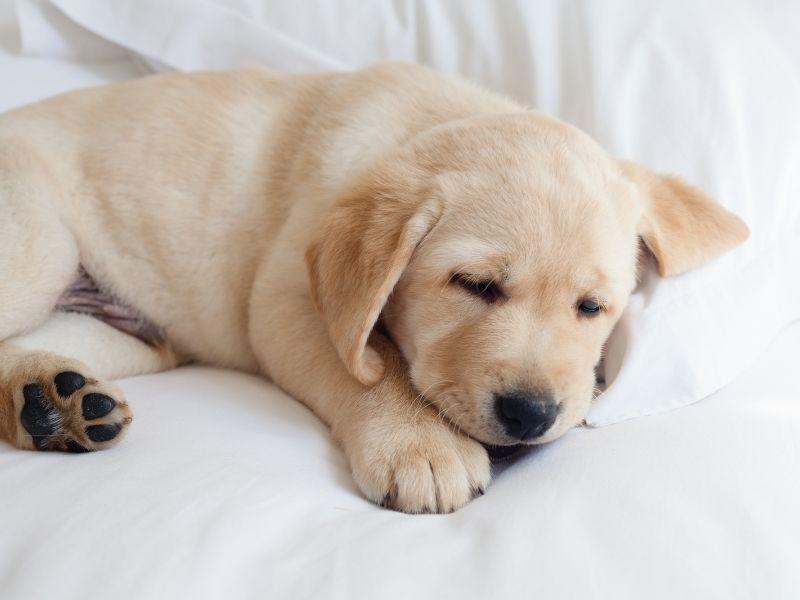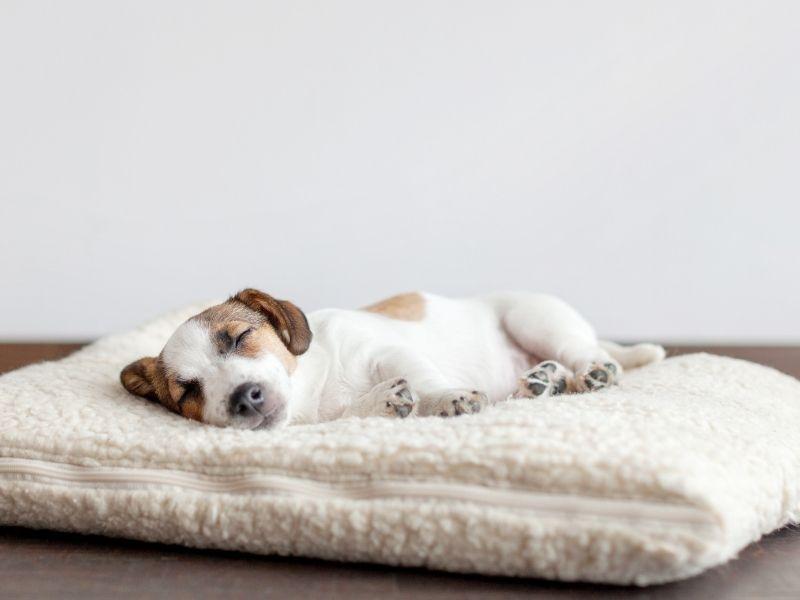There’s no denying that puppies are adorable. They’re also a lot of work. One of the first things you need to do when you bring your new puppy home is decide where they’re going to sleep. There are a few options for where your puppy can sleep. They could sleep in their crate, in your bed, or in a separate bed all their own. Each option has its pros and cons, so it’s important to consider your puppy’s needs when making this decision. If you choose to keep your puppy in a crate, for example, make sure that it is the right size for your dog and that they are comfortable sleeping there. On the other hand, if you opt to have your puppy sleep in your bed, be prepared for a few sleepless nights as they adjust to their new surroundings. Ultimately, the decision of where your puppy should sleep is up to you. Just make sure that wherever they sleep is comfortable and safe for them.
My Puppy Cries at Night, What Should I Do?
When you bring your new puppy home, they will likely cry or whine at night. This is a normal part of their adjustment to life in their new home and should gradually subside as they get used to their surroundings. If your puppy continues to cry even after several nights, it may be a sign that something is wrong. Here are a few things that you can do to help soothe your crying puppy:
i) Make Sure That They Have a Comfortable Place to Sleep
One of the most common reasons that puppies cry at night is because they are uncomfortable. If your puppy sleeps in a crate, make sure that it is big enough for them and that your puppy has all the bedding they need to stay warm and cozy. The same is true if they are sleeping in a bed or another type of dog bed.
ii) Invest In Some White Noise
Another thing that can help soothe your puppy and prevent them from crying at night is to invest in some white noise. White noise machines, fans, or even the TV can all provide background sounds that can help drown out other noises and keep your puppy calm and relaxed.
iii) Consult your vet
If you have tried all of these solutions but your puppy is still crying, it may be a good idea to consult your veterinarian for help. They can examine your puppy and rule out any underlying medical issues that may be causing them to cry at night.

How Do I Train My Puppy Not to Bite?
One of the biggest challenges that many new puppy owners face is training their puppy not to bite. Dogs often use their mouths as a way to explore and interact with the world, but biting can be dangerous for both you and your puppy. Fortunately, there are several things that you can do to help train your puppy not to bite.
i) Start Early
The earlier you can start training your puppy not to bite, the easier it will be. Set aside some time every day to play with your puppy and reward them for gentle, non-biting behavior. This will help reinforce positive behaviors and discourage biting as they grow older.
ii) Redirect Their Attention
If your puppy bites you when you’re playing, try to redirect their attention onto a toy or other non-human object. This will help them learn that biting is not acceptable and prevent them from associating your hands with playtime.
iii) Seek professional help
If your puppy’s biting persists even after trying these techniques, it may be helpful to talk to a professional trainer or behaviorist. They can help you identify the root cause of your puppy’s biting and develop a customized training plan to help them learn not to bite.
Biting is a natural behavior for puppies, but it’s important to train them not to do it. With patience and consistency, you can teach your puppy not to bite and help them learn to interact with the world in a safe and healthy way.
How Do I Discipline a Puppy?
Disciplining a puppy can be difficult, especially when they are young and still learning how to behave. To effectively discipline your puppy, it’s important to remain calm, consistent, and patient with them at all times. Here are a few tips for disciplining your puppy:
i) Set Clear Boundaries
When you first bring your puppy home, make sure to set clear boundaries from the outset. This will help your puppy understand what behaviors are acceptable and which ones aren’t. For example, you may want to avoid allowing your puppy on furniture or restrict them from certain rooms of the house until they have learned proper manners.
ii) Use Positive Reinforcement
Whenever your puppy exhibits good behavior, make sure to praise them or give them a treat. This will help reinforce the positive behaviors that you want to see and encourage them to repeat them in the future.
iii) Avoid Punishment
Punishing your puppy is generally not effective and can even lead to negative consequences like fear or aggression. If your puppy does something that you don’t want them to do, simply remove them from the situation and provide positive reinforcement when they behave correctly.
Disciplining a puppy takes time and patience, but it’s important to start early to set your puppy up for success. By using positive reinforcement and avoiding punishment, you can help your puppy learn the behaviors that you expect from them.

See Also: At What Age Should I Buy a Puppy?
And: What is the Best Puppy for Young Children?
Can I Leave My Puppy Alone for a Time?
Leaving your puppy alone for a period of time can be difficult, but it’s important to make sure that they are comfortable being left alone before you do. Start by leaving them alone for short periods of time (e.g., while you take a shower or run to the store) and gradually increase the amount of time as they get more comfortable. Make sure to provide them with plenty of toys and chew bones to keep them occupied, and give them plenty of praise when you return.
If you need to leave your puppy alone for an extended period of time, it’s important to make arrangements for someone to check on them regularly. This could include hiring a pet sitter or dog walker to take your puppy outside, interacting with them, and providing food and water.
Ultimately, whether or not you can leave your puppy alone will depend on their age and temperament. However, it’s important to make sure that they are comfortable being left alone before you do so.
Your new puppy can be a lot of fun, but it’s important to make sure that they get comfortable sleep and are well-rested. There are a few different options for where your puppy can sleep, including in their crate, in your room, or in a designated puppy area. Whichever option you choose, make sure that your puppy has a comfortable place to sleep and that they are not left alone for extended periods of time. With a little planning and preparation, you can help your puppy get the sleep they need and ensure that they are happy and healthy.
Featured image: Jack Russell Puppy Sleeping on a Dog Bed

